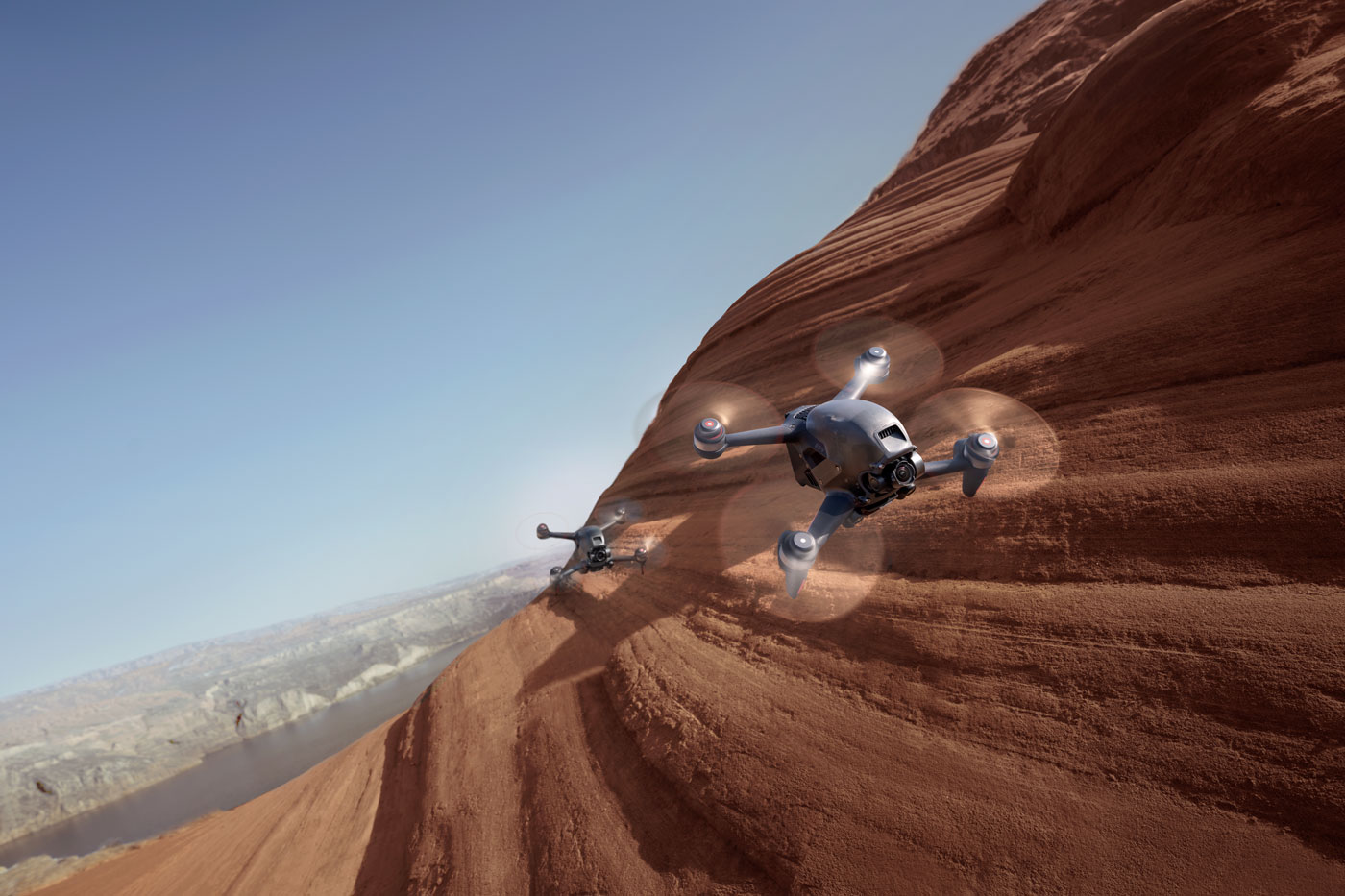
For his 15th birthday, DJI sees things in a big way. The n°1 of drones for the general public, visibly in great shape, unveils the DJI FPV. This new model aims to democratize first-person UAV flight, and should offer a reinvented flight experience thanks to headphones designed for this purpose. This new DJI model also offers impressive performance, with a maximum speed of 140 km/h (88 mph). Here’s a look back at all the features of this unique drone.
DJI’s first FPV UAV
After making a major contribution to democratizing drone flying, DJI is now tackling first-person piloted drones (FPV, for First Person View). Very fashionable, the FPV is based on the use of dedicated headphones. The result is a real immersion in the heart of the scene, and the feeling of being at the controls of a French patrol aircraft. This technology is particularly widespread in the world of racing drones, known as racers.
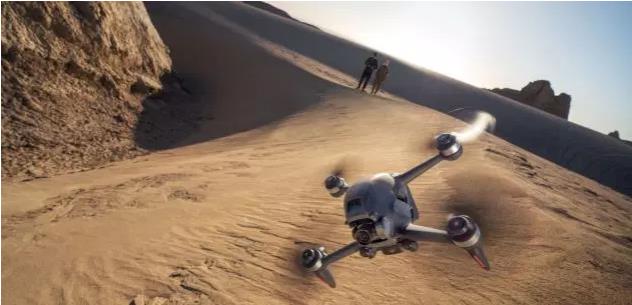
The new DJI FPV aims to embody the perfect fusion between a racer drone – for its velocity, agility and the impressive images it can capture – and the image quality offered by a “classic” drone.
In fact, this new drone has a radically different design from other DJI models. Intended to move forward – like the Parrot Disco flying wing – the drone is fully tilted forward, at an angle of approximately 45°. It thus seems resolutely designed for speed, to allow you to obtain impressive images.
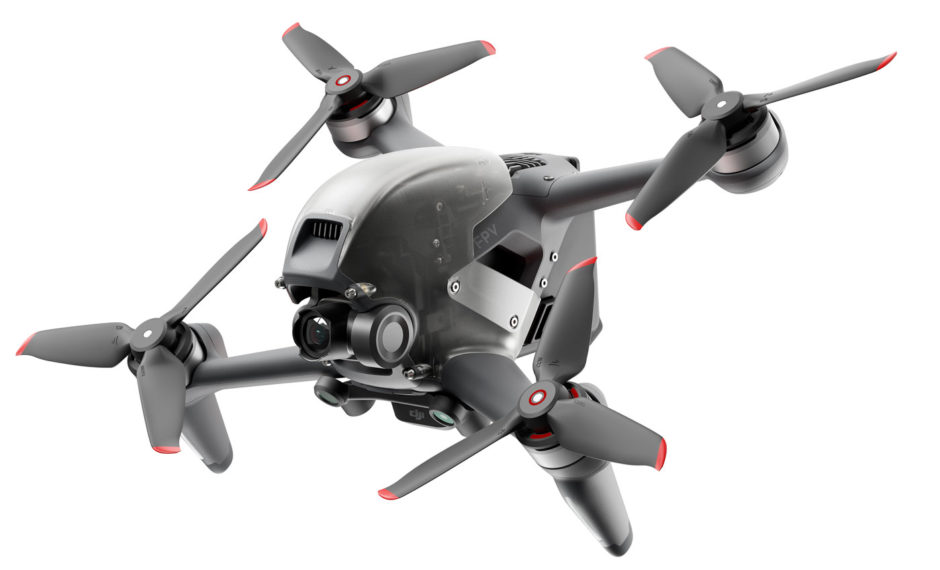
Speed as the main objective
Maximum speed: 88 mph. 0-60mph: 2 seconds only. The DJI FPV displays particularly impressive values, and should provide an undeniable sensation of speed.
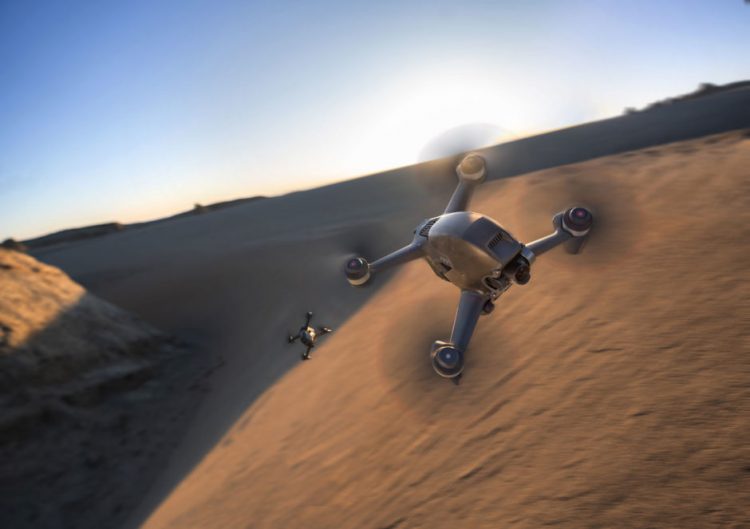
To tame the machine, three flight modes are proposed:
- Normal mode, which offers controls similar to other DJI drones. The machine stabilizes while waiting for instructions from the pilot ;
- Manual mode, which offers fully manual control and unlocks the aircraft’s maximum performance; this mode is disabled by default and reserved for experienced pilots, as no pilot assistance is available ;
- Sport mode, a kind of combination of N and M modes, which allows assisted piloting while offering a maximum speed of about 100 km/h and better handling than the Normal mode. In this mode, the UAV is also stabilized.
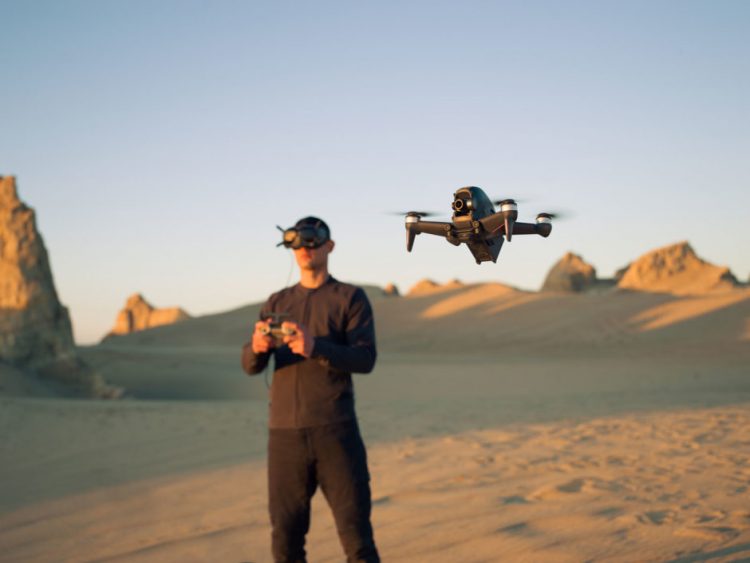
For added safety, the DJI FPV is equipped with 2 obstacle sensors located under the UAV, and 2 sensors placed at the front. It is also equipped with an infrared sensor, allowing the aircraft to fly indoors. Since the aircraft is mainly designed to fly forward, it does not use the obstacle detection sensors on the sides or at the rear.
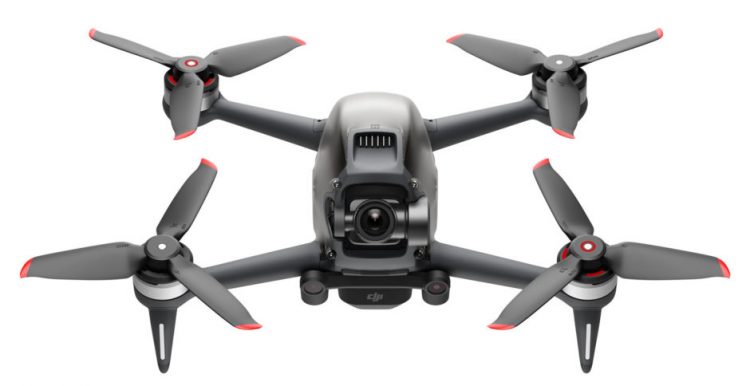
Notably, the obstacle sensors at the front are disabled in Sport and Manual modes, allowing seasoned pilots to fly very close to the ground without the aircraft, for more impressive images. The Normal mode, on the other hand, is more reassuring: the obstacle sensors are activated and speeds are reduced, minimizing the risk of crashes.
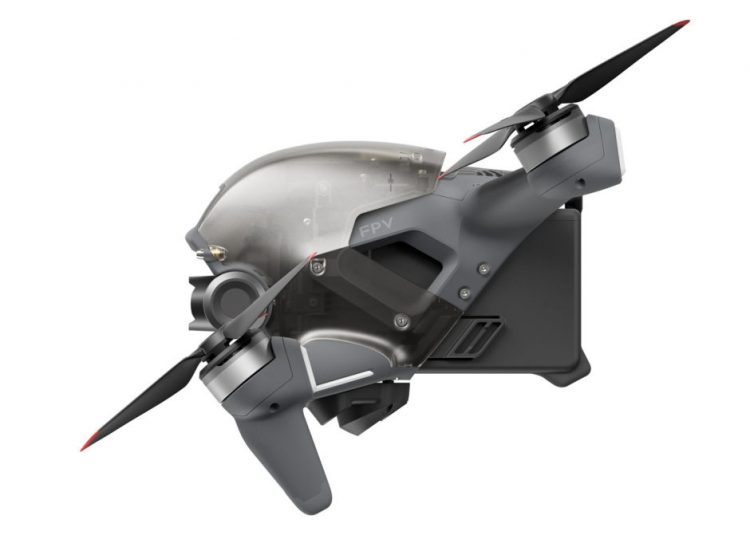
Finally, an emergency braking function is available from the remote control. When you activate it, the UAV stops (almost) instantaneously and starts to glide on the spot. However, the manufacturer indicates that a minimum distance of 30 meters is necessary for the UAV to stop, which is normal given its maximum speed.
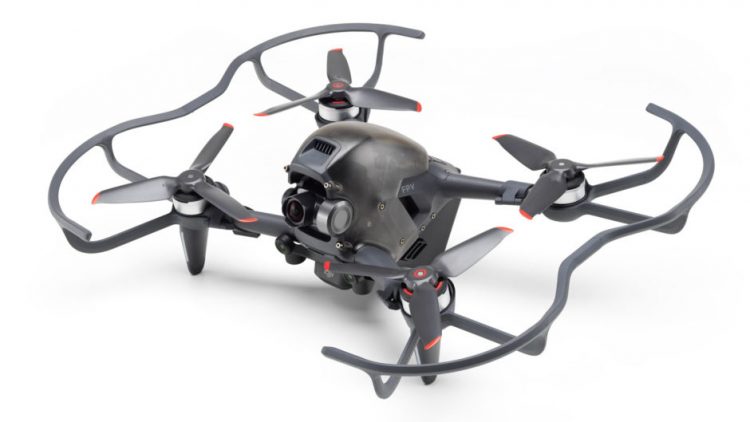
Of course, the “Return to home” function is also present, allowing you to easily bring the device back within easy reach. Finally, the device integrates an ADS-B receiver. It detects flying machines in the vicinity, and sends you a notification to react accordingly.
12MP sensor and 4K 60 fps video
To capture photos and videos, the DJI FPV is equipped with a 1/2.3-inch (measuring 6.17 x 4.55 mm) 12MP sensor. It is topped with a 14.66 mm equivalent wide-angle lens opening at f/2.8. The ISO range is from ISO 100 to ISO 12,800, and the shutter speed is from 1/50 to 1/8000 s. Images can only be captured in JPEG.
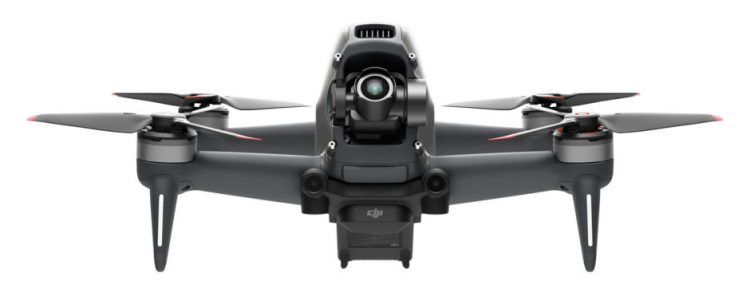
Resolutely designed for video, the DJI FPV is capable of filming in 4K at 50 or 60 fps, with a maximum data rate of 120 Mbps. In Full HD, it has a slow motion mode at 100 or 120 fps. Images can be recorded in H.264 or H.265 for more efficient compression. The camera also offers a D-Cinelike color profile. The result is a greater range of image adjustment in post-production.
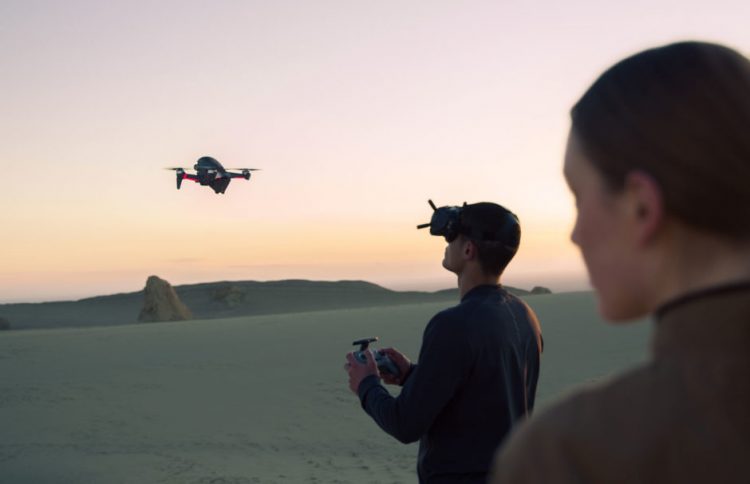
For greater video stability, the DJI FPV uses an electronic stabilization system (EIS) called RockSteady. Already present on DJI’s Osmo Action camera, it should erase any shaking of the camera. It should also smooth out the acceleration/braking and sudden movements of the UAV. Finally, note that the camera pod is tiltable only in height (from -50° to 58°).

DJI FPV V2 Headset
To follow the evolution of the drone live, DJI relies on the DJI FPV V2 headphones, the second version of its immersion headsets.
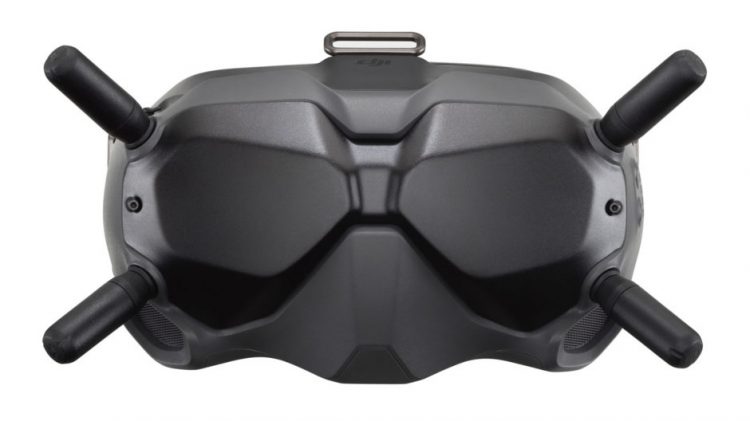
The latter communicates with the UAV thanks to the OcySync 3 system, which must offer extremely low latency (only 28 ms). In addition, the UAV and the headset support the 2.4 and 5.8 Ghz frequency bands and are capable of switching automatically from one to the other. The result is better image quality and signal reliability.
The advantage of these headsets is that they immerse you in the heart of the scene, and offer a sensation of speed that is impossible to achieve just by looking at the screen of a smartphone. In addition, the headset allows for more precise piloting – essential for flying your drone at high speed.
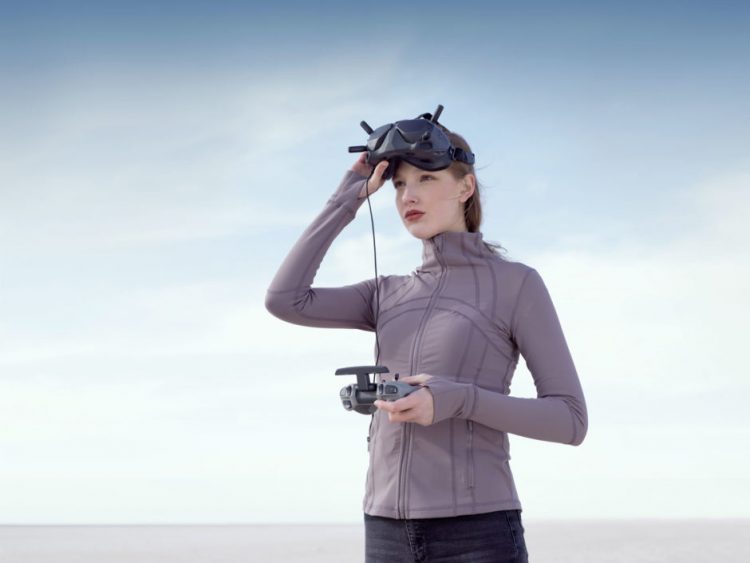
In addition to the video feedback, the helmet displays various information: the battery level of the helmet and the drone, obstacle detection, altitude, distance from the starting point, flight mode, etc. A “5D” button gives access to the settings, but also allows the user to browse through the different images captured by the UAV.
Finally, a Public mode allows the use of several DJI FPV V2 headsets. You will be able to share your drone’s video feedback with others.
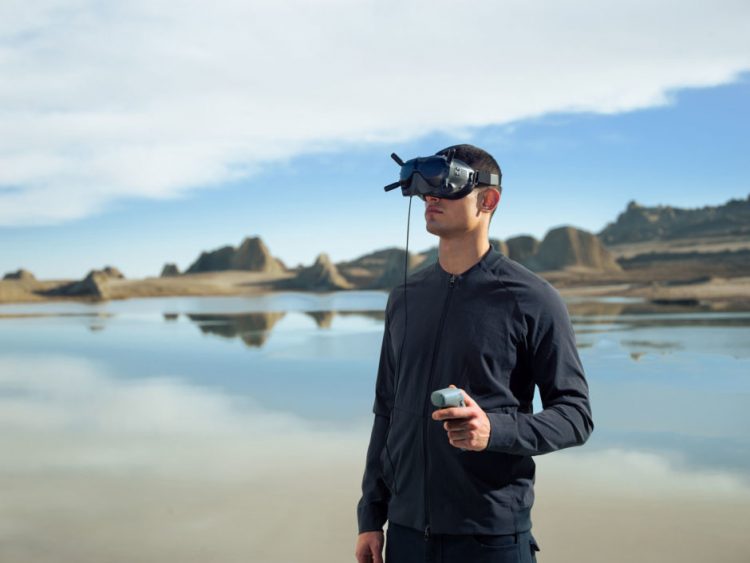
The helmet has ergonomic foams for greater comfort. Inside, there are 2 small 2-inch screens – with a resolution of 1440 x 810 px. They have a refresh rate of 144 Hz for greater visual comfort. A small slider allows the distance between the 2 screens (interpupillary distance) to be adjusted between 58 and 70 mm. The maximum field of view is 150°. Finally, the helmet is able to manage a 120 fps image flow.
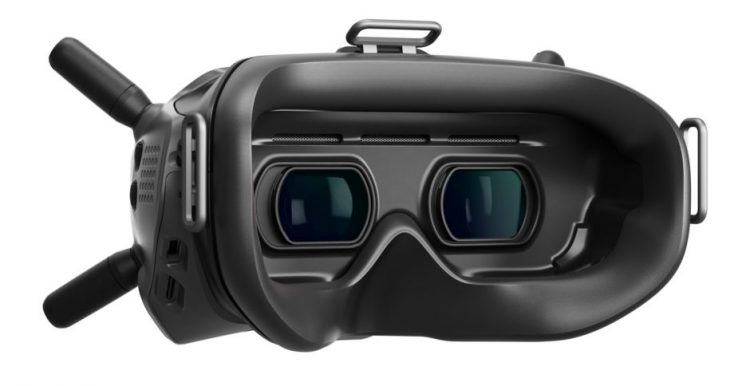
The first version of DJI’s FPV headsets (launched in 2019) already offered very good image quality, with excellent reproduction of details, colors and contrasts. No doubt this second version should do at least as well. Note that the headphones are equipped with a slot for micro SD cards (up to 256 GB), and are capable of recording photos and videos (H.264 codec only).
Finally, the headphones have a 1800 mAh battery, and should be able to work for 1h50 maximum according to DJI.
Remote control and new motion controller
To control the drone’s evolutions, DJI provides a “standard” remote control. The latter is in every way similar to the one that accompanies the Phantom range of drones. Quite massive, it has no screen, as the drone only works with headphones. Its battery should give it an autonomy of about 9 hours.
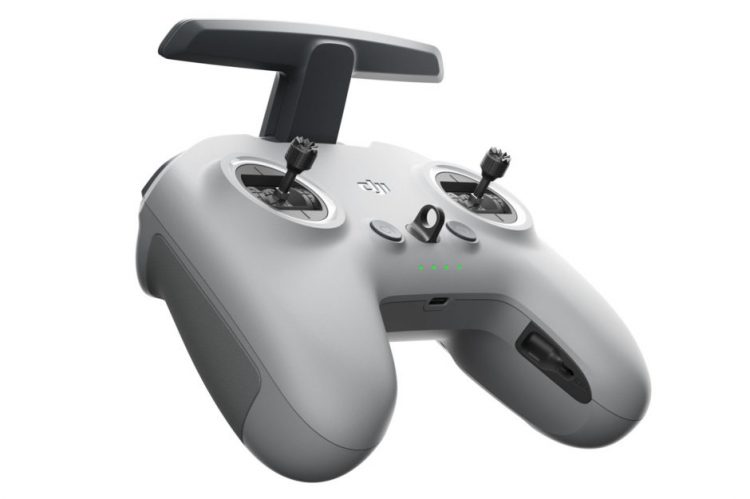
However, the DJI FPV can also be controlled with a new accessory, which DJI calls “Motion Controller”. This comes in the form of a small joystick, which is not without analogy to those in fighter planes (or at least those you used to play a simulation game in the 2000s).
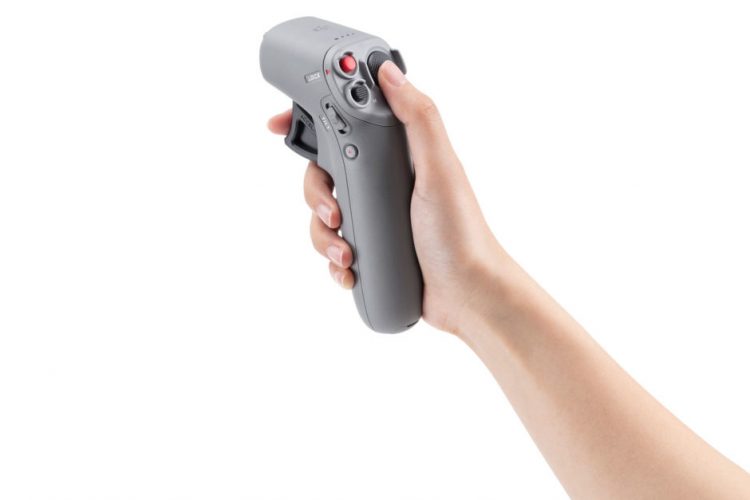
Very light (167 g), it fits in the palm of the hand. It is equipped with gyroscope. So, you just have to tilt it in the desired direction, and the device must react to the finger and the eye (no pun intended). A trigger also allows you to control the acceleration. Finally, a pad allows you to direct the orientation of the camera. This accessory should thus make flying even more intuitive, and is of definite interest. It is available as an option.
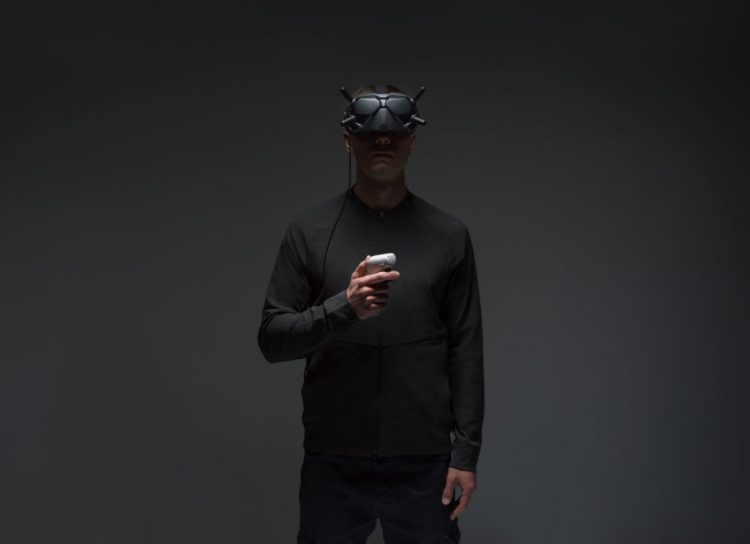
DJI Fly application
To accompany his drone, DJI once again uses DJI Fly, his “simplified” application. It offers the possibility to easily read and edit video rushes, before sharing them on social networks.
A Fly Spots feature also makes it possible to locate places of interest for UAV practice; however, this feature is only available in China. Finally, a feature will soon make it possible to display the live view of the helmet on the smartphone, when it is connected by cable. This feature will be available thanks to an upcoming firmware update.
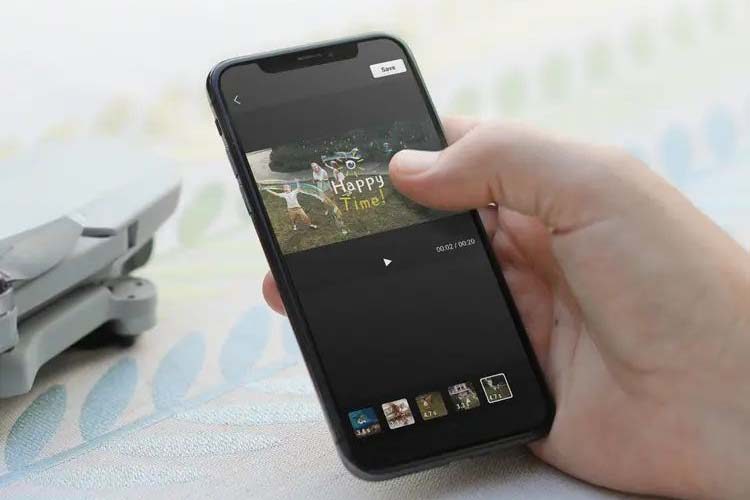
A new app, called DJI Virtual Flight App, is also available. It includes a series of tutorials and a real flight simulator to help you get familiar with FPV flight. However, this app is only available for iOS (from version 11 onwards), and DJI has not yet mentioned a version for Android.
An easy to repair drone?
Since first-person flying is not without risk, DJI has made it easy to replace parts damaged in a crash. Thus, the camera nacelle, the landing gear and the upper hull of the aircraft are modular and must be easily replaceable.
Of course, the Chinese manufacturer offers its DJI Care Refresh warranty, which is designed to minimize the cost of repairs.
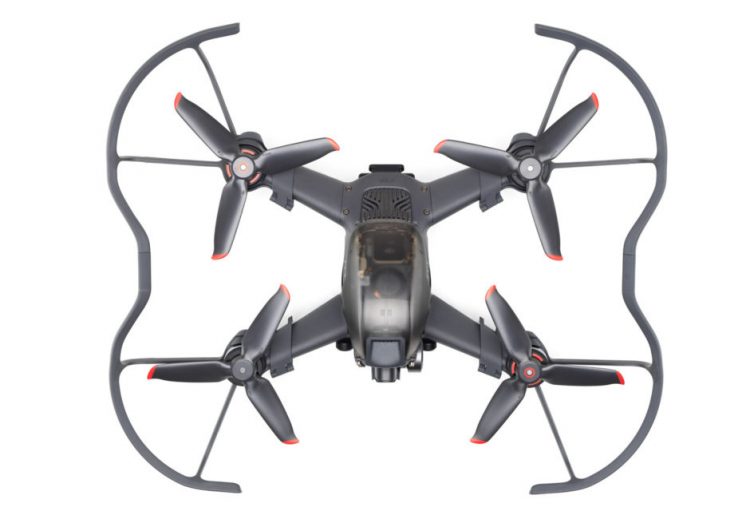
Our first opinion on the DJI FPV
DJI’s bet is daring. With this new type of drone, the Chinese brand is entering a niche market, and aims to seduce remote pilots who love thrills and very dynamic images. In doing so, the manufacturer is investing in a very specific field, hitherto reserved for experienced pilots, who build their machines themselves before sending them into the air. The brand is thus creating a new marketing segment: the “general public” FPV drone. This is a strategy it had already deployed with “classic” UAVs – with proven success.
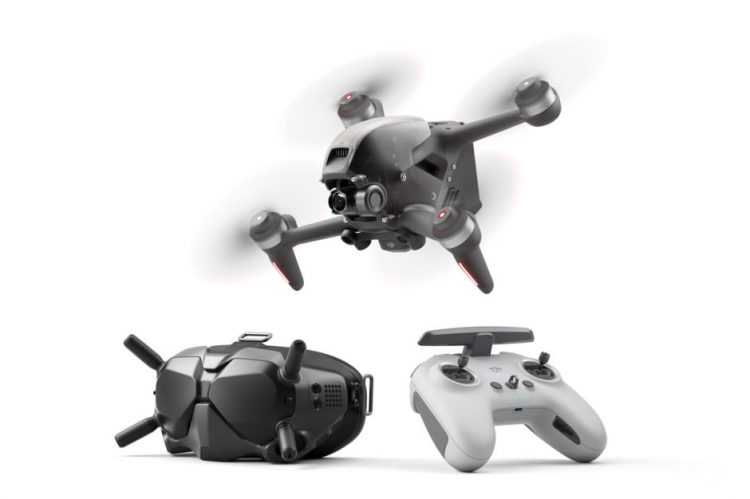
However, the DJI FPV faces a major obstacle: regulation. The latter is even more restrictive than for “traditional” UAVs. Likewise, the UAV must remain within sight, which limits its field of action.
Still, the DJI FPV is certainly one of the most attractive drones the brand has launched. It radically changes the way drones are used. Thanks to its dedicated headphones, it allows you to be fully immersed in the scene you are capturing. And its new motion controller offers a new way to control it, both more intuitive and more dynamic.
The price is still quite high, but it is justified by the technological arsenal deployed by the Chinese brand.







